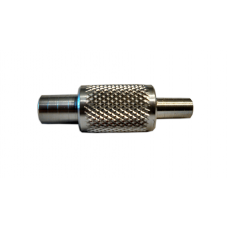There is a lot of good information here but remember this, if you full length resize your cases the bullet is being supported by the chamber throat and the rear of the case is supported by the bolt face. When full length resizing the body and neck of the cartridge are not touching the chamber walls and any minimal case misalignment is reduced to nearly zero with the cartridge supported this way.
As long as you can visualize a full length resized cartridge case with the body and neck of the case not touching the chamber walls the word "runout" get smaller.
Even the experts say so
Kevin Thomas predecessor in the Sierra testing lab was the late Jim Hull, and now Kevin is shooting for Team Lapua USA.
Now think about what Jim Hull was saying, "I get my best accuracy when the cartridge case fits the chamber like a rat turd in a violin case" now look at the picture I posted above and think about what is actuallyy touching the chamber.
Now read this by someone who also knew Jim Hull.
The Rifleman's Journal: Reloading: Partial Neck Sizing
"Now the last scenario, a full-length sized case in which the neck is also fully sized. There is clearance at the neck and in the body of the case, the closest fit anywhere is the bullet in the throat. If the neck to bullet concentricity is good (although it needn't be perfect), then the bullet will find good alignment in the throat and the case body and neck will have minimal influence. Let's not forget that the base of the case is supported by the bolt face or the extractor to a certain degree as well; this is yet another influence on alignment. As you can see, there are several points from base to bullet that can have an effect. My procedure is to minimize the influence of those that I can control, namely the case body and neck, and let the alignment be dictated by the fit of the bullet in the throat and to some extent by the bolt's support of the base. Barring a seriously out of square case head, I don't think the bolt can have a negative effect on alignment, only a slightly positive effect from minimizing "case droop" in the chamber. Given that a resized case will usually have a maximum of 0.001" diametrical clearance at the web, this isn't much of a factor anyway."
Germán A. Salazar also knew Jim Hull and has his quote at his webpage "The Rifleman's journal" and what he basically said above was his cases also fit the chamber like a rat turd in a violin case.







